Photo
collaborative energy and fluidity in spades!




The Shadow of the Vapor
Latest work from Adrien M & Clair B is a large scale installation full of rock-like formations fully projected with interactive particles which give a sense of flow throughout:
vimeo
A large-scale (900 msq), immersive and interactive work of art to pay tribute to the memory of the building and to the fungus named Torula, that used to cover the building before the renovation work started. The fungus feeds off the alcohol’s natural evaporation. Inspired by an animist fiction, Claire Bardainne and Adrien Mondot’s piece uses digital technology to reveal “the shadow of the vapor”.
More Here
931 notes
·
View notes
Photo
Platforms of affordance collide with ‘produser’ culture.



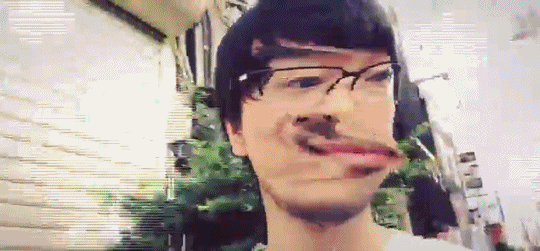
JIDO-RHYTHM
Japanese iPhone X app by Kitasenju Design describes itself as a ‘music video selfie app’, that applies various 3D effects to you face in time to audio playing:
vimeo
By taking selfie while listening to music, the visual effects that is linked to sound overlaps. A new sense of music video that incorporate “listeners” to the traditional “music + video”.
Please download app with a dedicated smartphone, and make your own interactive music video in different places with friends together.
More Here
350 notes
·
View notes
Photo
If the dog was on a giant wolf, this would be heavenly :)


It’s a fox riding a dog, it doesn’t get any better
25K notes
·
View notes
Quote
When we look out into space, we are looking into our own origins. Because we are truly children of the stars.

(via
the-wolf-and-moon
)
there’s a starman waiting in the sky .....
1K notes
·
View notes
Photo
AI, can be like social media in remediation, close but no cigar if it is not the author and only the publisher ...




Alternative Neural Edit
Latest project from @mario-klingemann employs Neural Networks trained on a collection of archive footage to recreate videos using the dataset.
It is confirmed that no human intervention has occured in the processed output, and it is interesting where there are convincing connections between the two (and where there apparently are none):
Destiny Pictures, Alternative Neural Edit, Side by Side Version
youtube
This movie has been automatically collaged by an neural algorithm using the movie that Donald Trump’s gave as a present to Kim Jong Un as the template, replacing all scenes with visually similar scenes from public domain movies found in the internet archive.
Neural Remake of “Take On Me” by A-Ha
youtube
An AI automatically detects the scenes in the source video clip and then replaces them with similar looking archival footage. The process is fully automatic, there are no manual edits.
Neural Reinterpretation of “Sabotage” by the Beastie Boys
youtube
An AI automatically detects the scenes in the source video clip and then replaces them with similar looking archival footage.
There are other video examples at Mario’s YouTube page (but some may not be viewable due to music copyright.
If you follow Mario’s Twitter timeline, you can get updated with the latest examples, and follow the evolution of the project [link]
423 notes
·
View notes
Photo
RIP Bourdain, you brought our little casa loads of laughs, travel ideas and street food envy - you will be hugely missed!

Comet Lovejoy, Cosmic Wand
3K notes
·
View notes
Text
from@allthingsgesh
“ Hey @frangolive ! What a great post! Rarely do I pull out the Nikon these days… It’s even in a back pack to make it easier and I just simply take the phone in my bag instead.. not am I content to just take one! It must be perfect!!! Although I only selfie in Facebook I’m still playing in that space.. I wonder what will be next. Cheers. A “.
This was actually a response to a @hellouniwork post about selfie’s. But I feel compelled to answer the query here, especially in light of the fantastic camera design at the top of this blog post. I have embraced my camera phone entirely, especially for immediacy and access and its always on affordances. However, I love my Canon SLR - its tech and the macro lens allow me to take close up shots of dragonflies that make you feel you are about to walk into the cabin of the world’s most beautiful helicopter.
I totally get ‘form follows function’ but I don’t want to rush everything, so my other Canon Digital model allows me to play and take action snaps of water coming off the side of the Manly ferry in Sydney and elide the ephemeral files that aren’t what I wanted to frame and capture.
I guess my answer to what next is that when you try to make one tech tool do everything it becomes increasingly about the tech and not about the user/creator/producer and we become more materially determined (ta v much Marshall Mcluhan :) ). I say keep the Nikons and Pentax’s if you have room and interest, there will always be an occasion and an aesthetic where they will come into their own - just ask a Hasselblad owner if they regret the gift of time and attention when they take pics of ancient emojis in their travels (Lange 2009). So don’t hesitate to take the Nikon Ms Gesh, its already packed and ready to go remember :), cheers F
https://www.danstacuve.org/hasselblad-500c-vs-mamiya-c330f/

Waiting for the gift of (sound &) vision…
MDA20009: Digital Communities
Week 9: Visual Communities and networked visualities
youtube
Nicholas Mirzoeff, Professor of Media, Culture, and Communication and New York University, helps to explain the shift from print media to new modes of media engagement and what it means for our world …
In the world of ubiquitous media imaging, immediacy is taking over our displays and archiving of photos and videos and they are now not the accessories to what we publish – they are the main story!! Our tech and networked communications allows us to author, distribute and manage them ourselves rather than hand the task over to a professional, in the blurring of business and leisure and how we document life (Hand 2012, p.5) Rather than funnelling our social and public images through one or two platform accounts, they can now be networked via Youtube and Vimeo, Instagram, FB and Snapchat to get the broadest reach possible (Posetti & Lo 2012).

https://www.photo.net/discuss/threads/the-most-beautiful-camera-ever-made.498101/
Mind you, if you do take the happy snap of your boss ‘gifting’ his secretary at the office Christmas party, thanks to LBS (that’s location based services, not little black stilettoes) he will be able to trace the pic if he really wants to …mmm Geotagging. Of course, you could try and disguise it with baby features and a rattle, via augmentation afforded on Snapchat and Instagram, in order to confuse timelines and publish the present as our future past (Herman 2014). But it is not really the textual content that matters according to sociologist Nathan Jurgenson – it’s just a drop in the ocean of our fluid self, with the content standing in for an ephemoral wave or a ‘hi there’, or in your boss’s case, maybe a wink (Herman 2014). But be wary of mixing your drinks and your modalities in combining text and imaging, it can produce new cultural languages – just ask Warnie! (Vivienne & Burgess 2013).

http://oceanup.com/2016/05/24/ed-sheehan-takes-his-new-bong-straight-to-the-head/ed-sheeran-new-bong-shane-warne-head-photo/
Once we augment, filter and manipulate a base level image and send it out into the ether, the semantics of it can vary due to our competencies with tech, language and culture(s). If someone sends an image with bunny ears, does it mean they want to work at a huge high roller’s mansion surrounded by variations on a theme of themselves, that its Easter Sunday everyday or they are perhaps ready to procreate 😊? (Mizuko 2008, p.2). It’s a resource intensive approach that lets account ‘produsers’ remake and redistribute content to tailor to the more niche audiences in terms of cultural mores such as art, politics, social recreations and affiliations (Lange 2009, p.71). With so many networked visuality platforms, it can be challenging to manage what is retweeted and what becomes that afternoon’s gif of the boss yawning in front of Santa (Posetti & Lo 2012).
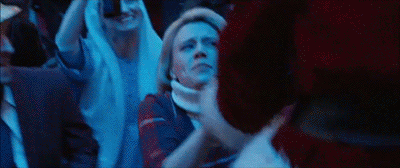
In fact, Patricia Lange tells us that one of the greatest gifts you can give anyone is your time, and attention should be valued as a gift rather than a measure of human capital in the realms of socionomics (Lange 2009, p.70). In this way audiences generate a social negotiation with videos they feel affinity for and that determines our attention to them and in what circumstances or context. Lange also advises there is relational value in videos of affinity or affiliation in that they are perceived in a largely binary way, in the aesthetics of professional videos and amateur video production. Affinity to both styles, based on attraction to people, their ideas or products can garner their own niche markets and audiences and like pledges made at a work Christmas function can vary in levels of sincerity (Lange 2009, p.71).
These videos form part of an ‘imaging community’ that reflects modes of labour, creativity and intimacy, affording structures to configure and interact amongst imagined communities (Hjorth 2011, p.51). My Moonage Daydreams Tumblr site is a platform for the ‘imagined community’ of MDA20009, Group 01-2018, that I have never met in person but are very much part of my real world and evidence the duality of digital publics and networked visualities (Herman 2014). Another point Lange (2009) makes is that ‘Videos of Affinity’ are contemporary, they don’t say “this is what we did in the past”, they say “this is what we are doing now and hope to do in dreams of the future”.
Two moons hoax: Mars won’t be as big as the moon on August 27; ignore those social media messages - News18
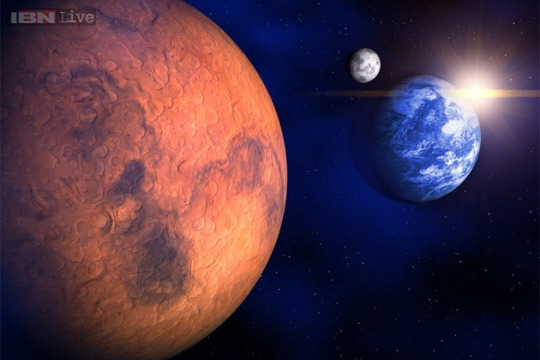
https://www.news18.com/news/india/two-moons-hoax-mars-wont-be-as-big-as-the-moon-on-august-27-ignore-those-social-media-messages-709753.html
With this in mind, I am a glaring example of Videos of Affinity and true contemporary, amateur modality, in that last week I published a video of montaged images for what students were doing in the present and like a stonkered boss at a party, what they potentially might be avoiding in the future.
It was totally not engaged with in anyway by the audience platform it was presented to and under the premise Lange (2009) makes that it was not professional and not selling or advertising any product, was considered insincere and not relational enough.
I am sincerely taking this as a compliment

https://www.pinterest.com/pin/177610779030869172/
Mizuko’s (2008) remaking and redistributing of a networked text …

http://www.dailymail.co.uk/news/article-2541162/Rickrolled-Student-pranks-physics-teacher-inserting-lyrics-Rick-Astley-s-Never-Going-Give-You-Up-paper-quantum-mechanics.html

REFERENCES:
Hand, M 2012, Ubiquitous Photography, Polity Press, Cambridge
Herrman, J 2014, ‘Meet the Man Who Got Inside Snapchat’s Head’, BuzzFeed, 28 January, viewed 3 August 2016, <http://www.buzzfeed.com/jwherrman/meet-the-unlikely-academic-behind-snapchats-new-pitch#3dlvjg2>.
Hjorth, L 2011, ‘Mobile spectres of intimacy: the gendered role of mobile technologies in love – past, present and future’, in R, Ling & S, Campbell (eds) The Mobile Communication Research Series: Volume II, Mobile Communication: Bringing Us Together or Tearing Us Apart? Transaction Books Edison, NJ , pp. 37-60.
Lange, P 2009, ‘Videos of Affinity on YouTube’, in P, Snickars & P, Vonderau (eds), The YouTube Reader, National Library of Sweden, Stockholm, pp. 70-88.
Mizuko, I 2008 ‘Introduction’, in K, Vamelis, ed. Networked Publics, MIT Press, Cambridge, MA, pp. 1-14.
Posetti, J & Lo, P 2012, The Twitterisation of ABCs Emergency & Disaster Communication, Australian Journal of Emergency Management, Vol. 27, no. 1, pp. 34-39
Trinity College Dublin 2010, Professor Nicholas Mirzoeff, Trinity Week Lecture, [video], viewed 22.5.18,< https://youtu.be/LiEK4fJ_I9M>
3 notes
·
View notes
Text

Let me take a selfie!!!

As I write this blog post, there are 346,938,095 public posts on popular social media platform, Instagram, with the hashtag #selfie (Instagram 2018). That is a whole lot of selfies for the world to see and this trend in imagery has transformed the way we take photos. Gone are the days of setting up a tripod, putting on a self-timer, rushing back to pose for a photo and praying that it turned out ok until you got your photo developed.
Now, its all about the instant selfie that you take, usually with one arm up in the air holding your phone and taking a few pics to get the ‘perfect’ photo. As Oakeley, 2016 writes “taking selfies has become an intrinsic part of our culture, and looking at the incredible popularity of apps like Instagram and Snapchat, they don’t seem to be going away anytime soon”. In fact, mobile phone companies are tapping into this trend and developing products that can meet this must-have need.
Tech giant Apple delivered this when they launched the iPhone X with its revolutionary TrueDepth Camera (Apple 2018). This technology allows users to “create beautiful selfies with sharp foregrounds and artfully blurred backgrounds” on its front-facing camera (Apple 2018).
We are indeed part of the selfie revolution and its doubtful that it will be going away any time soon. But it begs the question – what are we trying to achieve from having a selfie? A bit of research online found that there are a number of reasons why people take selfies. Corner (2014) found:
seeing body transformations and boosting self esteem (the classic before and after photos)
chasing fame by being noticed
purely to boost your self esteem
promoting your model look
sharing different ideas of beauty.
So what does all of this information tell us? Well, we are deep in the selfie revolution that will most likely last for a long, long time. It’s not going away anytime soon. They are also a great way to communicate in a digital world – the amount of Instagram models and sharing travel experiences allows us to show who we are and where we are in the click of a button and in an instant.
Selfies really are being used for good, but let’s just hope they aren’t being used to exacerbate internet trolling, because that can really un-do the ‘selfie revolution’.

References
Instagram 2018, #selfie, Instagram, viewed 3 June 2018, <https://www.instagram.com/explore/tags/selfie/>.
Oakeley, L 2016, The next step in the ‘selfie’ revolution, Esquire Middle East, viewed 3 June 2018, <https://www.esquireme.com/content/17036-the-next-step-in-the-selfie-revolution>.
Apple 2018, iPhone X, Apple, viewed 3 June 2018, <https://www.apple.com/au/iphone-x/>.
Corner, L 2014, Selfies: Pioneers of a Visual Revolution?, Independent, viewed 3 June 2018, <https://www.independent.co.uk/life-style/gadgets-and-tech/features/selfies-pioneers-of-a-visual-revolution-9353663.html>.
3 notes
·
View notes
Photo
In de Zwart & Humphries (2014), Goffman advises that ‘humans often experience and negotiate life through a series of frames to different audiences’, as we move from role to role in our daily lives’ and we do it with ease and seamlessly. The algorithm, which performs a simulacra of our thinking and mental processing is capable of acting as our ‘frames’ transference so it behoves us to consider what data we give it to put in a frame at any given time. If we are capable of interacting with the ‘program’ or machine learning at increasing rates of immediacy the channeling of our communications provides linkages for purposes other than the author’s intention (Taylor 1997). Sometimes we need to slow it down and think deeper ....





YouTube Artifacts
Latest AR exhibition from MoMAR (who ran a guerilla show earlier this year) returns to the Pollock Room at MoMA New York featuring works by David Kraftsow, responsible for the YouTube Artififacts bot that regularly generates animated images from distorted videos:
Welcome to The Age of the Algorithm. A world in which automated processes are no longer simply tools at our disposal, but the single greatest omnipresent force currently shaping our world. For the most part, they remain unseen. Going about their business, mimicking human behavior and making decisions based on statistical analysis of what they ‘think’ is right. If the role of art in society is to incite reflection and ask questions about the state of our world, can algorithms be a part of determining and defining people’s artistic and cultural values? MoMAR presents a series of eight pieces created by David Kraftsow’s YouTube Artifact Bot.
More Here
378 notes
·
View notes
Photo
youtube
Hope you enjoyed a little Moonage Daydream dust to engage with as much as I enjoyed curating it - what a blast for this little Tumblr!
au revoir and out into the ether :), cheers F
http://www.bbc.com/news/technology-35279234
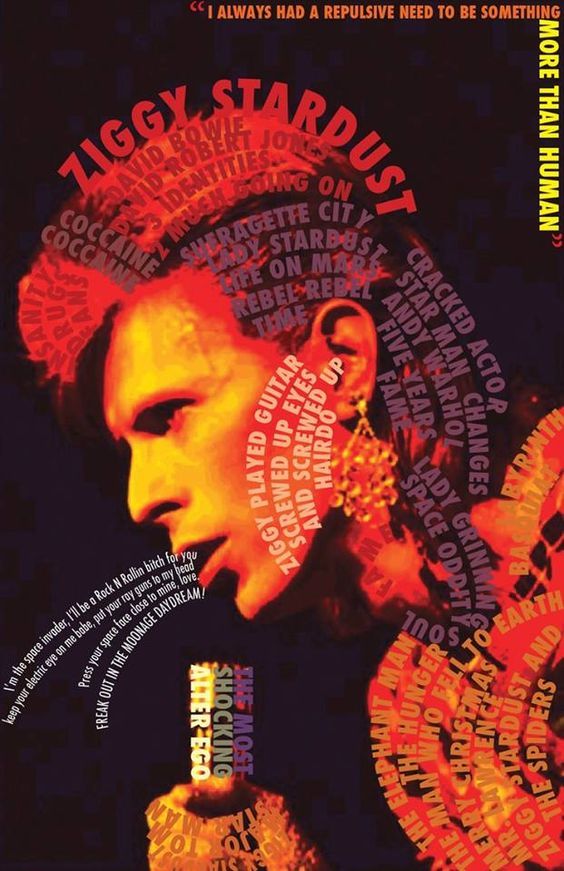
David Bowie is best remembered for his music - but he was also groundbreaking in his use of technology, not least his internet service, BowieNet, which launched in September 1998.
In a time before Instagram, YouTube, Twitter or even MySpace, most artists provided little if any online material to their followers. But Bowie’s platform not only offered a wide variety of exclusive content, but also several ways to interact with the singer himself.
“In my view, BowieNet had to be the most groundbreaking reachout to fans that I have ever seen any artist ever do,” Craig Carrington, one of its users, says.
David Bowie said in interviews during the 1990s that he expected the internet to have a big effect on the music industry. 1999, Fans were invited to send in lyrics to help co-write a track, and 80,000 people responded. The singer said he had read through many himself - “there were a lot of potty ones”, he told one journalist - and eventually chose a submission by a 20-year-old American about the idea of having a virtual life on the internet. Fans were invited to watch the track being recorded via a 360-degree interactive webcast - a technology that is only just becoming commonplace today. The song, What’s Really Happening?, later featured on the Hours… album.
Virtual worlds
The singer’s fondness for new forms of communication was also apparent with BowieWorld - a 3D chat environment offered via his site, which pre-dated Second Life. "It took a couple of minutes to download, but was completely new for the internet,“ says Mr Carrington. "It gave the illusion that you were going through a three-dimensional city, and you saw decorations that he put all over the place - favourite posters and pictures of himself. "You had an avatar - a creature or a person you controlled - and you could move around the environment and interact with others.”
“I couldn’t be more pleased to have the opportunity of moving the music industry closer to the process of making digital downloads available as the norm and not the exception,” said Bowie in a statement Monday. Bowie has long been a fan of the Internet and digital distribution. He was one of the first name-brand artists to release a single online in 1997 (the drum ‘n’ bass track “Telling Lies”), he pioneered the use of Webcasts and chats, and launched the world’s first artist-created Internet service provider in 1998 with the formation of BowieNet.
The new album will be available in two file formats, both of which comply with the record industry’s Secure Digital Music Initiative (SDMI) specifications: Liquid Audio and Microsoft’s Windows Media. These formats allow Bowie to sell the album and enforce copyright protection, which explains why he did not opt to use the popular MP3 format. This may also limit the number of downloads since the most popular files are free.
As a result, Bowie downplayed his expectations: “We are all aware that broadband opportunities are not yet available to the overwhelming majority of people, and therefore expect the success of this experiment to be measured in hundreds and not thousands of downloads. However, just as color television broadcasts and film content on home video tapes were required first steps to cause their industries to expand consumer use, I am hopeful that this small step will lead to larger leaps by myself and others, ultimately giving consumers greater choices and easier access to the music they enjoy.”
In an age where we take for granted our cyborg augmentations and networked digital communities, the multi layered mediated personas of our favourite artists may well have evidenced the emergence of affiliated diversity, affinity of activism and allignment of socionomics, colliding with their individual social mediated network aesthetic of avatar?
2 notes
·
View notes
Text
Visions of the future past out in the ether …
MDA:20009 DIGITAL COMMUNITIES
Week 10: Playing the Crowd
In socially populated online gaming worlds, where overlapping rule sets, both strange and familiar are agreed to contractually and negotiated evolutionally, it is no surprise to find the attractions of escapism, accelerated ideal self-expression and intersection of political goals and societal communion (de Zwart & Humphreys 2014).
Out amongst the ethereal interstellar particles of hydrogen and helium that make up deep space, the MMORG (massive online roleplay game) of EVE, is combining all these attractions with the tiers of Maslow’s (1943) hierarchy of needs along its historical narrative thread, to see how humans react to contexts of what would seem to be the opposite of first world laws and governments (de Zwart & Humphreys 2014, p.78, Piech 2016).
Current percentage of gamers will be shipshape ready for interstellar war if and when it is declared thanks to the huge platforms of online gaming that involve conflict and military strategies, brutality and hegemony, elitism and bigotry that will shape the ‘Goffman frame’ of their social mores in a galaxy far far away where lack of a moral compass or sense of humanity may be deemed an asset, not a crime (de Zwart & Humphries 2014)
Away from the passivity of watching networked texts in a broadcast form, digitally networked nationstates are forming and storming and deciding who to cast their votes and video modes of affinity with, via their heavily invested online actions, environmental controls and intensive iterations of war and peace, crime and punishment and digitally networked socionomics (Taylor 1997).
THOUSANDS of Eve Online players just got SCREWED OVER by ONE GUY! (Pretty Good Gaming, Published on Sep 15, 2017)
youtube
Sounds like Trump and the Nth/Sth Korea dynamic …
However, we don’t have to prostitute the fear factor of stranger danger and ‘others’ trauma online, to bulldoze policy, codes of practice and create a reactionary result of deeply centralized government controls with unprecedented power and no courts’ supervision back out into our offline communities (The Guardian 2017).
The high adrenalin addictive nature of affordance in some games is not the social norm for all and the crowdsourced networked communities of more listening and learning games can provide meta data for advocative socially inspiring activist and artistic causes (Taylor 1997, p.174).
Its largely a matter of choice about which platforms of social gaming make your heart sing, whether it be a kickstarter game that calls for strategies that include both cruelty and sympathy or a Biogame, that harvests the networked pattern recognition of players to identify pathology strains!
youtube
http://biogames.ee.ucla.edu/
You could explore the great affinity online peeps have for cats and put your allegiance in the way of the HK Project, a truly cosmopolitan platform for aesthetics that do not include hegemony but instead encompass and welcome respect and diversity.
youtube
“ Although the team has worked hard so far on HK, it's still pretty early in its development cycle. The developer doesn't expect a release for several more years, especially considering that the team only consists of two humans and two cats (the blog also admits that the cat in charge of communication isn't doing its job very well).”

You could just as easily combine ground breaking codes of practice and aesthetic engagement by immersing yourself in a platform by one of your favourite media stars …
At the end of 1999, the singer also became involved in video games, when he appeared in Quantic Dream's Omikron. He played a character named Boz, a hunted revolutionary. "It was relatively unprecedented to have such a big star embody a character within a game and not just appear as a thinly veiled version of themselves," says Thomas McMullan, a tech journalist at Alphr who played Omikron as a teenager. "And Bowie engaged to a level that went beyond just lending his face. He worked on it from a musical point-of-view as well. A bit that really sticks in my memory is a secret concert that you could discover if you uncovered some clues, and it showed you a clip of him playing in a fictional band. It felt like sneaking into an underground concert."
(Entertainment Infinity 2017)
https://www.kotaku.com.au/2016/01/the-video-game-that-changed-how-i-saw-david-bowie/
One of the most powerful aspects of online gaming is the ability to self-express and experiment the many facets that we may be too ‘gun shy’ to take out in our offline publics for whatever reason.
Many gamers play and are played by expressions of a fluid self that Nathan Jurgenson claims is the norm for social interactions in a world where an ephemeral death can be replaced with a Goffman like reframed silhouette of ideals and aesthetics (de Zwarth & Humphries 2014).
youtube
While Omikron: The Nomad Soul is Bowie's most direct interaction with the gaming industry, his influence on creators and players alike is impossible to miss.
The most obvious evidence of Bowie's influence comes from Hideo Kojima's Metal Gear Solid series. First came numerous references to "Major Tom" in Metal Gear Solid 3: Snake Eater, referencing Bowie's "Space Oddity" and "Ashes to Ashes". According to the Metal Gear Wiki, both songs were considered for ending songs for the game, only to be replaced as the game's space themes became less pronounced during development.
Then there's Metal Gear Solid V: The Phantom Pain, a game featuring the private military company Diamond Dogs, a name derived partially from the Bowie album of the same name. Indeed the game opens with a cover of Bowie's "The Man Who Sold The World" by Midge Ure.
youtube
And let's not forget this image, which made the rounds a couple of years back

https://www.kotaku.com.au/2014/03/david-bowie-is-every-metal-gear-solid-character-ever/
So, in our digitally networked communities of online games that have remained one of the few platforms (apart from porn, ironically) that have hung on and ridden the roller coaster of internet economics and socionomics, don’t let the hours spent engaged as a digital layer of yourself endanger or harm the offline layers of your person or others (Castronova 2004, p. 173).
Ask yourself, will it harm or will it help this one life I have to live – until the next one? …..
REFERENCES:
AskaScientist 2018, ‘What space is made of”, viewed 26 May 2018, <askascientist.co.uk/space/what-is-space-made-of/>
Castronova E 2004, ‘The Price of Bodies: A Hedonic Pricing Model of Avatar Attributes in a Synthetic World’, KYKLOS, Vol.57, pp.173196
de Zwart, M & Humphreys, S 2014,' The Lawless Frontier of Deep Space: Code as Law in EVE Online', Cultural Studies Review, vol. 20, no. 1, pp. 77-99.
Entertainment Infinity 2017, ‘Omikron: The Nomad Soul – David Bowie Interactions/Music’, [online], viewed 24 May 2018, <https://youtu.be/-eOulnVZv0o>
EVE Online, 2014, Home: EVE online, viewed 3 August 2016, <www.eveonline.com>.
Piech K 2016, ‘Political Economy, An Introduction to the Theory of Economic Policy’, viewed 25.5.18, <https://www.researchgate.net/figure/Diagram-of-Maslows-hierarchy-of-needs_fig15_308530946>
PrettyGoodGamers 2017, ‘
THOUSANDS of Eve Online players just got SCREWED OVER by ONE GUY!
’, [online] viewed 26 May 2018, <
https://www.youtube.com/watch?v=gEO-Gc-VKV4
>
Taylor, J. (1997). The emerging geographies of virtual worlds. Geographical Review, 87(2), 172-192. Retrieved from https://search-proquest-com.ezproxy.lib.swin.edu.au/docview/225336600?accountid=14205
The Guardian 2017, ‘Gillian Triggs Australian Government ideologically opposed to human rights’, [online], viewed 20 May 2018, <https://www.theguardian.com/australia-news/2017/jul/26/gillian-triggs-australian-government-ideologically-opposed-to-human-rights>
Thornhill T, 2014, 'The online videogame battle that cost $300,000: Gamers see hundreds of costly spaceships destroyed after user forgot to pay bill to defend their base', The Daily Mail, 29 January, viewed 3 August 2016, <http://www.dailymail.co.uk/news/article-2547908/EVE-online-sees-biggest-battle.html>.
IMAGES:
Hk Project 2017, [image],https://pbs.twimg.com/media/CdcBpUmUkAEOJh4.jpg
6 notes
·
View notes
Text
This question in particular stands out to me .
“ Network gaming affords escapism from reality but at times they raise moral questions about how far some players push its pixelated borders. I can only wonder as these online networks expand how far will technology and societies morals be pushed? “
The fact that you can create an avatar (alter persona) in the context and setting of online games, but also actually operationalise that avatar as commodity of your online creation and trade it off to someone who desires that bundle of attributes once we are done with it, shows the ephemoral nature of how we rep culturally in digital communities. But also how we diversify our presence into a socionomic platform for commercial and economic return on what starts out as our price to play, fight and trade in our digital publics (Castronova 2004). Ta v much for another good read :), cheers F
Online gaming and the magic circle
When I think about online gaming I think about escape, I think about how players can be transported and exist in a world where gaming platforms are used to interact and fulfil their wildest fantasies of becoming a Starfleet captain, an outlaw in the wild west or tend to a herd of virtual animals on your own pixelated farm. Massive multiplayer online (MMO) games like as “Farmville” (Zynga 2018), and massive multiplayer online role-playing games (MMORPG) such as “EVE Online” (Zwart & Humphreys 2014, p. 77) and the recently released “Wild West Online” (playwwo 2018) afford users the ability to interact with fellow users through networks exploring at times their own sense of self as much as the virtual world created for them.
youtube
EVE Online - Titan Kill (Everything EVE 2016)
In MMORPG’s such as EVE players are asked to participate in deceit, fraud, theft, and even murder, acts which go against the rules of society (Zwart & Humphreys 2014, p. 78), at times MMORPG’s asks participants to go outside the boundaries of acceptability of everyday standard, allowing players to interact in situations outside of the moral codes of real-world scenarios. So how do online players switch hats so to speak, how do they change from being a father, mother or office worker during the day to becoming a ruthless outlaw within online worlds antagonising fellow users?
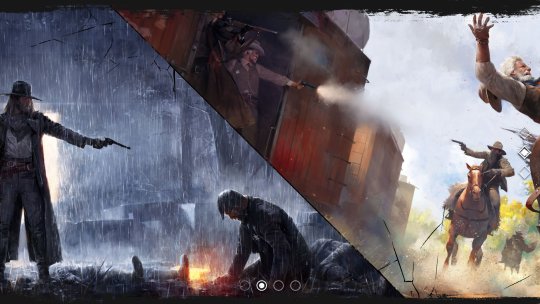
Become an outlaw in the west (Wild West Online 2016)
Technological advances have allowed users an affordance to explore alter egos and escape reality through social networked interaction but how do users know where the borders and rules of the online world begin and end (Young & Whitty 2010, p. 1230). The magic circle theory developed by Johan Huizinga in 1939’s describes how a playing field is physically marked out “allows for the change of everyday rules and the transformation of acceptable behaviour rules” (Zwart & Humphreys 2014, p. 91), in traditional terms these are the white lines of a football pitch but online gaming networks like EVE are governed by terms and conditions which are designed to enforce the magic circle. However, participating in a game with other real-world users where the narrative explores murder, deceit and provocation the digital lines of the magic circle can become extremely blurred at times.
youtube
Racist Trolls Online (Tech Insider 2018)
Gaming Technology affords connection and a majority of players verbal interact through headsets blending their real and gaming environment together. Above is a video narrated by Terrence Miller where he discusses his experiences as a black gamer and the abuse he’s been subjected to online. During the video, Miller talks to Kishonna Grey, a scholar from Arizona State University who discusses the normalisation of racism gamers of colour feel due to ongoing verbal assaults By other users (Tech Insider 2018). Network gaming affords escapism from reality but at times they raise moral questions about how far some players push its pixelated borders. I can only wonder as these online networks expand how far will technology and societies morals be pushed? Although seen as science fiction, Westworld (HBO 2018) which see’s networked cyborg experiences blended with reality have already begun through network gaming platforms.

Westworld (Lousolversons 2018)
Reference List
De Zwart, M & Humphreys, S 2014,’ The Lawless Frontier of Deep Space: Code as Law in EVE Online’, Cultural Studies Review, vol. 20, no. 1, pp. 77-99.
HBO 2018, Westworld, HBO, 28 May 2018, <https://www.hbo.com/westworld>.
Lousolversons 2018, ‘These are all just roles’ [image], tumblr, 28 May 2018, <https://lousolversons.tumblr.com/post/174118225401/you-feel-free-to-command-everyone-else>.
Tech Insider, Racist Trolls Are Still Dominating Video Games, 11 April, viewed 23 May 2018, <https://youtu.be/vPspkEB6l18>.
Wild West Online 2017, Sneak peak on BIG upcoming, 17 May, viewed 27 May 2018, <https://pbs.twimg.com/media/DdXL9PdVAAAwxUJ.jpg>.
Wild West Online 2018, Wild West Online, Wild West Online, viewed 26 May 2018, <https://www.playwwo.com>.
Young & Whitty, 2010, ‘An Exploratory Study of Trolling in Online Video Gaming’, International Journal of Cyber Behavior, vol. 2, no. 4, pp. 17-33.
14 notes
·
View notes
Link

Senior Level Designer (UE4)
For the development of “HK Project” we are looking for a senior level designer on Unreal Engine 4 to join our team.
Your role will be to imagine, prototype and develop 3D third person game levels with the rest of the team. You will actively participate in the writing and the definition of multiples elements of narration and gameplay in order to put them in context in the game engine and follow them until the playtests.
Profile:
Solid Level Design Experience on 3D third person levels
Curious, versatile, proactive and autonomous
Capable of defending and questioning his choices
Very good sense of architecture, space organisation and consistency in a 3D environment
Interested in visual narration, staging and story/characters development
Capable of putting rhythm and dynamic in a game experience
Capable of managing game difficulty and player learning curve
Very technical and versed in game engines
Very good scripting skills
Able to organize and follow playtest sessions
Plus:
Very profound knowledge of the Unreal Engine 4
Often participate in game jams
Plays often and a great variety of games
Love cats! =^・ェ・^=
Please provide CV and everything that can support your application (Portfolio, linkedin, demos, videos, …)
Position open on site in Montpellier as soon as possible.
Please send your appllication to [email protected]
0 notes
Text
We have seen the future, and the future is emojis ...
FAHRENHEIT 451 ★★★★
Monday 9.30pm, Showcase
We have seen the future, and the future is emojis. Ray Bradbury's original dystopia, in which printed matter is banned (and burned) and everything comes to us via giant screens needed only a little tweaking to make it feel like the not-so-distant future in Ramin Bahrani's adaptation.

Michael B. Jordan in Fahrenheit 451.
Bradbury imagined us all addicted to soap operas. Here all information is reduced to the equivalent of a hashtag and homes are monitored by a state-controlled Siri-like helper that does everything from choosing your outfits to prescribing – and delivering – medicine.
Living the good life in the midst of all this is Montag (Michael B. Jordan, excellent), a fireman on the rise who seems to take particular relish in tracking down dissidents and torching illegal materials, making the first act as burny and action-packed as you could wish. But when Montag and his crew come across a room in an old house crammed with books things start to shift and it's the philosophical discussions as much as the action that make this so invigorating.
And while the whole point here is a passionate defense of books and reading, it also intelligently acknowledges the power of words to divide – and inflame.
By Melinda Houston, 27 May 2018
https://www.smh.com.au/entertainment/tv-and-radio/m26tvpay-20180426-h0za78.html
2 notes
·
View notes
Text
The iconographic text above, shows that emoji use is not just a ‘full stop’ or postscript at the end of a sentence, it is now the sentence properly constructed. With each emoji a ‘function word’ full of meaning and (the author’s intent). They are the first steps in a legitamised non verbal digital literacy, so be mindful of how you compose them and who will receive them if you want your meaning to be as clear as possible (Kirley and McMahon 2017). Our competency at interpreting emojis is synonymous with cultural competencies and court cases are increasingly relying on experts to assist in at least thirty three 2017 US court opinions, according to law professor Eric Goldman (Cherney 2018)
~*🙏🔪🔮🌟💻💡💛🍕🚫*~
emoji spell for hunk’s vlog to be good and not about food
likes charge, reblogs cast
2K notes
·
View notes
Text
With social media platforms lagging in self management and regulations of best practices, content distribution can be irresponsible and potentially harmful. If we as digital citizens abuse the liberties we enjoy because we have handed over the genuine self management of our everyday lives, thoughts, actions to somewhat insidious ideological saturations of social media platforms, are we showing we are willing to relinquish governance to entities and fellow digital citizens we really know very little about – why wouldn’t governments or authoritarian entities fulfill the role of social media nanny if we are so ready and willing to recklessly weaponise our visual media productions? (De Zwart & Humphries 2014, p.88)
1B: Week 10 - Social gaming
The term ‘social gaming’ implies a far more collaborative approach to gaming than what I’m used to (as someone born in the *gulp* 1980s).

(Source: https://giphy.com/explore/solitaire)
But according to research, social gaming isn’t as social as we think.
Although social gaming encourages engagement among adolescents, it can also lead to dependency, the negative psychosocial effects of which can cancel out the benefits of these games (Sioni, Burleson & Bekerian 2017, p. 11).
These negative effects stem from the “considerable personal investment of [gamers’] time and money” and can include sleep and mood disorders, personal neglect, increased absence from school or work, and fractured relationships with ‘real-life’ friends and family (Sioni, Burleson & Bekerian 2017, p. 12).
It’s these relationships that researchers suggest are the biggest issue. Researchers such as Kowert et al. (2014) who found that adolescents who spend a significant amount of time on social gaming are at greater risk of replacing their offline relationships (and persona) with those they’ve formed online (Kowert et al. 2014, p. 386).
Does research like this explain why Pokémon Go took the world by storm when it was released in 2016?

(Source: https://www.slashgear.com/pokemon-go-rakes-in-200-million-during-first-month-of-availability-08451059/)
Yes, you’re reading that right. Pokémon Go brought in $200 million within its first month on the market (Abent 2016).
Unlike traditional social games, Pokémon Go players are forced into the outside world where they hunt Pokémon and share their finds with other players. As well as significantly increasing physical activity and offline socialisation among gamers (Kaczmarek et al. 2017, p. 360), Pokémon Go may also have contributed to a reduction in depression, anxiety and subsequent social withdrawal (Tateno et al. 2016, p. 848).
But has it given us the solution to the harmful consequences of social gaming dependency? What are your thoughts?
References
Abent, E 2016, Pokemon GO rakes in $200 million during first month of availability, Slash Gear, viewed 26 May 2018, <https://www.slashgear.com/pokemon-go-rakes-in-200-million-during-first-month-of-availability-08451059/>.
Kaczmarek, L, Misiak, M, Behnke, M, Dziekan, M & Guzik, P 2017, ‘The Pikachu effect: Social and health gaming motivations lead to greater benefits of Pokemon GO use’, Computers in Human Behavior, vol. 75, pp. 356-363, viewed 26 May 2018, <https://www.sciencedirect.com/science/article/pii/S0747563217303527?via%3Dihub>.
Kowert, R, Domahidi, E, Festl, R & Quandt, T 2014, ‘Social gaming, lonely life? The impact of digital game play on adolescents’ social circles’, Computers in Human Behavior, vol. 36, pp. 385-390, viewed 26 May 2018, <https://www.sciencedirect.com/science/article/pii/S074756321400212X?via%3Dihub>.
Sioni, S, Burleson, M & Bekerian, D 2017, ‘Internet gaming disorder: Social phobia and identifying with your virtual self’, Computers in Social Behavior, vol. 71, pp. 11-15, viewed 26 May 2018, <https://www.sciencedirect.com/science/article/pii/S0747563217300560?via%3Dihub>.
Tateno, M, Skokauskas, N, Kato, T, Teo, A & Guerrero, A 2016, ‘New game software (Pokémon Go) may help youth with severe social withdrawal, hikikomori’, Psychiatry Research, vol. 246, pp. 848-849, viewed 26 May 2018, <https://www.psy-journal.com/article/S0165-1781(16)31298-7/fulltext>
8 notes
·
View notes